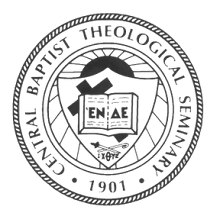I have never been in Yangon without students and colleagues
with me. Because I came ahead of the
others in order to participate in commencement, I have a couple of days to see
parts of the city I have not visited before.
I will try not to get into any trouble!
Yesterday
morning I went to the historic Strand district, which lies along the Yangon
River. There you can see the major customs house, the port authority, colonial
era hotels, and huge ships who make their way inland to Yangon. Visions of the arrival of the Judsons went
through my mind as I saw the bustle of people in the various shipping areas,
albeit two hundred years later. The
boats are a bit bigger, and I saw none with sails—just big smokestacks and
sonar.
I spent
this morning at the National Museum and found it refreshing to encounter the
history of this land presented by its own cultural historians. From the early centuries of the Common Era to
the present, artifacts of art, musical instruments, traditional ethnic dress,
and ancient ornaments filled the five-story building. In addition, mapping the discovery of
prehistoric fossils, including early forms of humans, enriched the holdings.
I found of great interest the Showroom
for the Cultural of National Races, an attempt to acknowledge the ethnic
diversity of the nation. The ceremonial
dress, unique instruments such as harps, flutes, and drums, and cultural
artifacts filled discrete sections of this display area. Because MIT/Central students come from all
over the nation, this helped me understand better their pride in their contexts
and customs, as well as the wonderful crafts they shower on their guests.
As might be expected, the religious
history figures prominently, and one whole wing is full of varied expressions
of the Buddha. Presented in various
media, the figurations of this spiritual teacher remain at the heart of the
lived religion of about 92% of the population.
It is all the more remarkable that Christian churches continue to
flourish where the cultural disposition is decidedly pro-Buddhist.
Established in 1952, the museum opened in
1996. The Republic of the Union of
Myanmar Ministry of Culture operates it, and there are definite political goals
at work in sections of the collection.
One section is full of pictures of political leaders; another contains
graphics of projected economic improvements, e.g., offshore drilling; and
another section is full of flags of the nations of Southeast Asia, which
Myanmar aspires to engage in development initiatives.
Tomorrow holds more opportunity for
cultural learning. I think a boat ride
on the river is in order if I can arrange it.
Hopefully, I will not head out to sea.
Molly T. Marshall






No comments:
Post a Comment